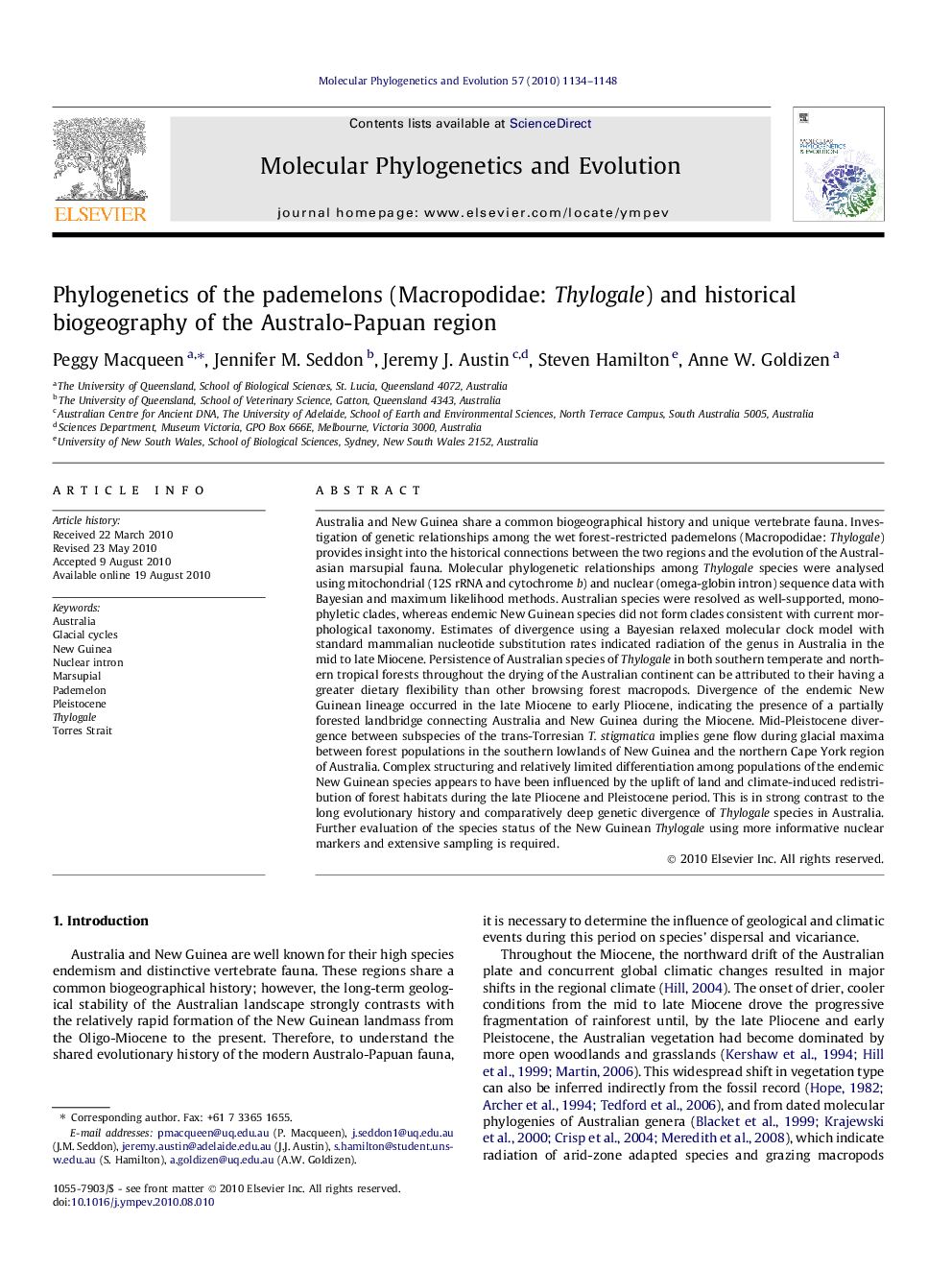| کد مقاله | کد نشریه | سال انتشار | مقاله انگلیسی | نسخه تمام متن |
|---|---|---|---|---|
| 2834259 | 1164302 | 2010 | 15 صفحه PDF | دانلود رایگان |

Australia and New Guinea share a common biogeographical history and unique vertebrate fauna. Investigation of genetic relationships among the wet forest-restricted pademelons (Macropodidae: Thylogale) provides insight into the historical connections between the two regions and the evolution of the Australasian marsupial fauna. Molecular phylogenetic relationships among Thylogale species were analysed using mitochondrial (12S rRNA and cytochrome b) and nuclear (omega-globin intron) sequence data with Bayesian and maximum likelihood methods. Australian species were resolved as well-supported, monophyletic clades, whereas endemic New Guinean species did not form clades consistent with current morphological taxonomy. Estimates of divergence using a Bayesian relaxed molecular clock model with standard mammalian nucleotide substitution rates indicated radiation of the genus in Australia in the mid to late Miocene. Persistence of Australian species of Thylogale in both southern temperate and northern tropical forests throughout the drying of the Australian continent can be attributed to their having a greater dietary flexibility than other browsing forest macropods. Divergence of the endemic New Guinean lineage occurred in the late Miocene to early Pliocene, indicating the presence of a partially forested landbridge connecting Australia and New Guinea during the Miocene. Mid-Pleistocene divergence between subspecies of the trans-Torresian T. stigmatica implies gene flow during glacial maxima between forest populations in the southern lowlands of New Guinea and the northern Cape York region of Australia. Complex structuring and relatively limited differentiation among populations of the endemic New Guinean species appears to have been influenced by the uplift of land and climate-induced redistribution of forest habitats during the late Pliocene and Pleistocene period. This is in strong contrast to the long evolutionary history and comparatively deep genetic divergence of Thylogale species in Australia. Further evaluation of the species status of the New Guinean Thylogale using more informative nuclear markers and extensive sampling is required.
Figure optionsDownload as PowerPoint slideResearch highlights
► Unlike other wet forest macropods, Thylogale have persisted in forests across eastern Australia from the Miocene to the present.
► Pademelons dispersed to New Guinea in the late Miocene across a partially forested landbridge.
► Dispersal of Thylogale stigmatica between Australia and New Guinea occurred in the Pleistocene.
► New Guinean Thylogale clades are not consistent with current morphological species designations.
Journal: Molecular Phylogenetics and Evolution - Volume 57, Issue 3, December 2010, Pages 1134–1148